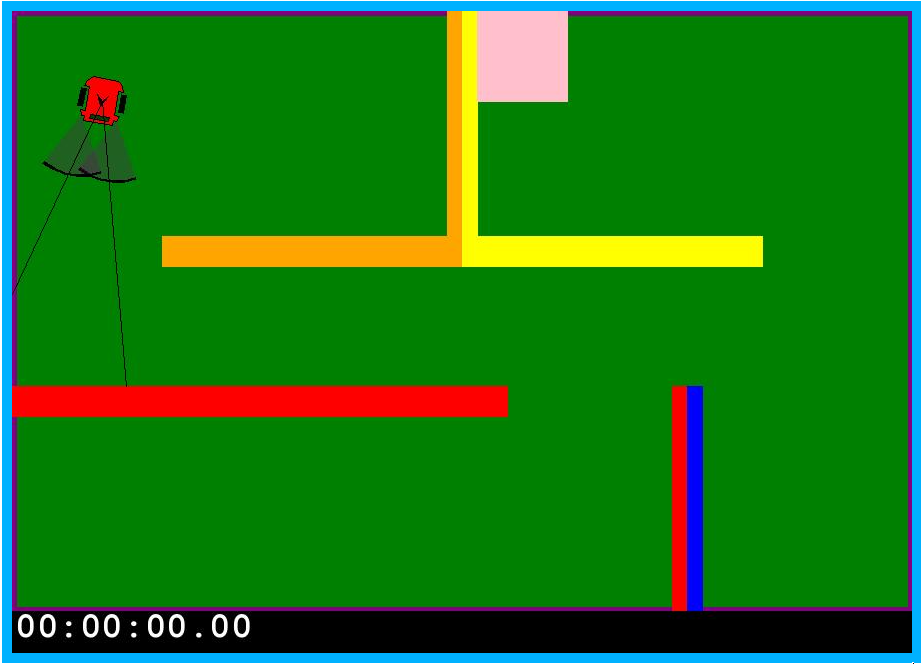Lab 4: What is it like to be a robot?
Due Wed. May 1st in class

A simulated robot situated in a colorful world.
Introduction
We will again be using Google colab. This time we will be controlling a simulated robot in a world consisting of several rooms off of a corridor. Your goal will be to try to move the robot through this world to reach the pink box. Follow
this link
to start the lab. Before you begin working, save a copy of this
notebook to your own Google drive.
Analysis
Include two screenshots showing the top-down view of the simulated
robot environment. One will show your first try at navigating
through the environment to reach the pink box. The other will show
a later attempt.
Answer the following questions:
- Did your ability to take the robot's perspective improve
with practice from your first to later attempts? If so, explain
how your understanding of the robot's proximal view evolved over
time. If not, describe why taking the robot's proximal view is
so difficult.
- At the bottom of page 441 in Nagel's paper, he states that
"Whatever may be the status of facts about what it is like to be
a human, or a bat, or a Martian, they appear to be facts that
embody a particular point of view." Imagine that you were
navigating through the hallways of the Science Center to find a
brighly colored box. How would your point of view be different
from the robot's in the simulated task?
- In the movie "The Machine that Changed the World: The
Thinking Machine" they made the point that perception proved to
be much more difficult than AI researchers expected. This in
turn led many AI researchers to focus on a disembodied kind of
intelligence. On page 147 of the Dreyfus reading, he argues that
having a body may be "indispensable for intelligent behavior."
What are you thoughts on this issue, is embodiment a key aspect
of intelligence?
Bring in a printed copy your analysis to class next week.

